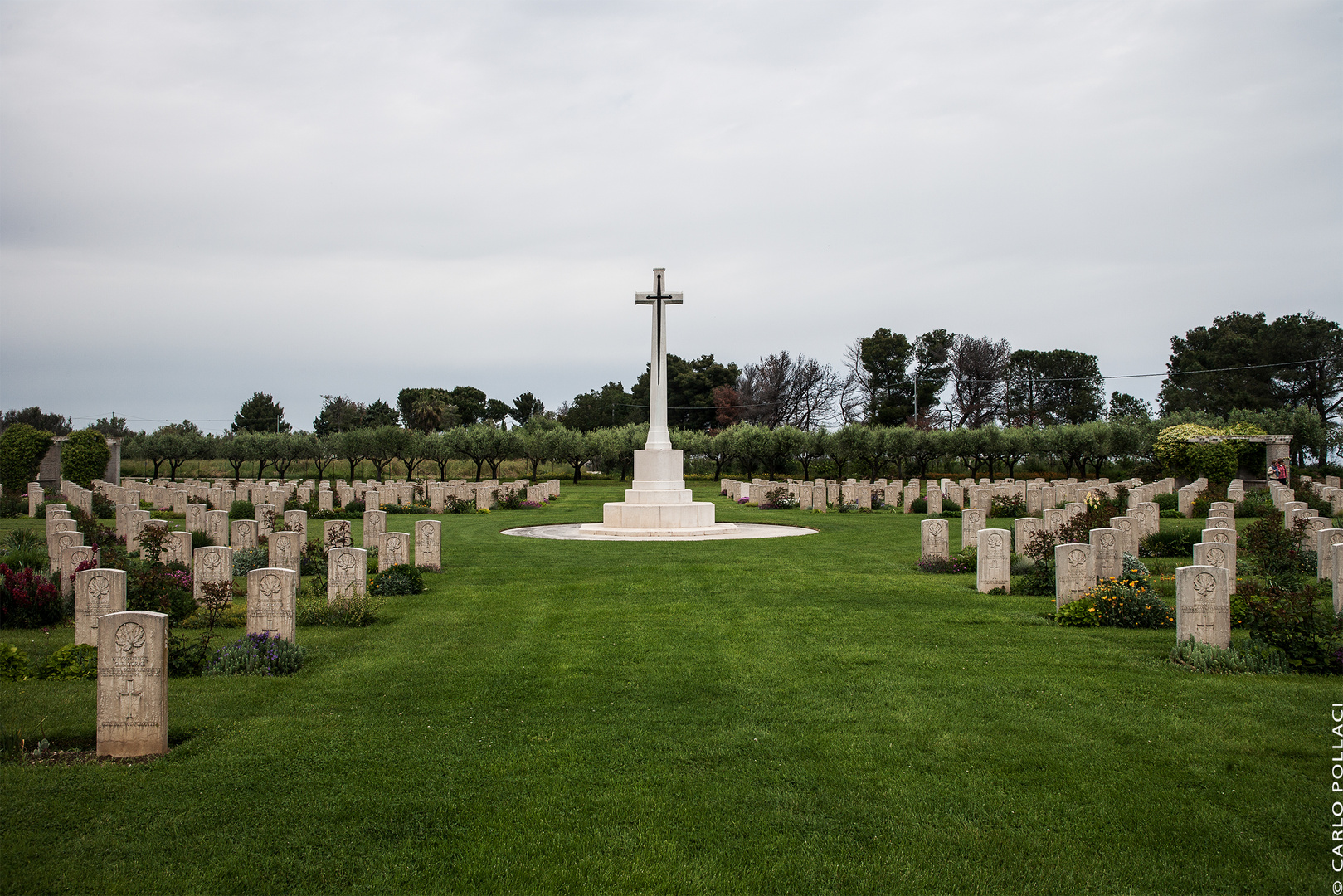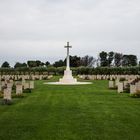Cimitero Militare Canadese di Ortona (Moro River Canadian War Cemetery)_3
Il Cimitero Militare Canadese (Moro River Canadian War Cemetery), realizzato tra il 1944 e il 1945 nella frazione di San Donato di Ortona, raccoglie le spoglie dei soldati canadesi (ma anche di altre nazionalità) caduti nella cosiddetta “Battaglia di Ortona”, combattuta nel contesto della “campagna del fiume Moro”.
La cittadina di Ortona che, a detta degli storici, nel quadro delle operazioni militari che videro fronteggiarsi le truppe alleate e quelle tedesche lungo la linea Gustav, costituiva un obbiettivo strategicamente secondario, se non irrilevante, per decisione del Maresciallo Montgomery (comandante dell’armata alleata) venne presa d’assalto dal 22º Reggimento fanteria canadese mentre a sua difesa si schierò il 3º Reggimento paracadutisti dell’armata tedesca.
La determinazione dei combattenti di entrambi gli schieramenti, a cui si aggiunse l'ordine personale di Hitler di difendere la città “fino all'ultimo uomo”, fecero di Ortona una sorta di piccola Stalingrado d’Italia.
I combattimenti per la conquista di Ortona, tra il 14 e 28 dicembre 1943 furono particolarmente accaniti, casa per casa, con atti di eroismo e perdite elevate da ambo le parti e cessarono solo con il ritiro delle truppe tedesche su posizioni a loro più favorevoli, mentre la cittadina era stata praticamente rasa al suolo.
Le vittime della battaglia furono di circa 900 soldati tedeschi e 2300 soldati alleati, oltre a 1300 civili rimasti intrappolati nelle loro case.
Nel cimitero riposano le spoglie di oltre 1600 soldati alleati caduti nella battaglia, soprattutto canadesi (1375), ma anche inglesi neozelandesi, indiani, sudafricani e australiani.
Scorrendo le lapidi, geometricamente allineate all’ombra di aceri, colpisce la giovane età dei caduti, per la maggior parte compresa tra i 19 e i 26 anni. Giovani uomini venuti dall’altro capo del mondo a dare il loro contributo di sangue per la liberazione dell’Europa dal nazifascismo.
The "Moro River Canadian War Cemetery", built between 1944 and 1945 in the hamlet of San Donato di Ortona, collects the remains of Canadian soldiers (but also of other nationalities) fallen in the so-called "Battle of Ortona", fought in the context of the "Moro river campaign".
The town of Ortona which, according to historians, in the context of the military operations which saw the Allied and German troops facing each other along the Gustav line, constituted a strategically secondary, if not irrelevant, objective due to the decision of Marshal Montgomery (commander of the army allied) was taken by assault by the 22nd Canadian Infantry Regiment while the 3rd Parachute Regiment of the German Army deployed in its defense.
The determination of the fighters on both sides, to which was added Hitler's personal order to defend the city "to the last man", made Ortona a sort of small Stalingrad of Italy.
The fighting for the conquest of Ortona, between 14 and 28 December 1943, was particularly fierce, house by house, with acts of heroism and high losses on both sides and only ended with the withdrawal of the German troops to positions more favorable to them, while the town had been practically razed to the ground.
The casualties of the battle were approximately 900 German soldiers and 2300 Allied soldiers, as well as 1300 civilians trapped in their homes.
The remains of over 1600 Allied soldiers who fell in the battle rest in the cemetery, mainly Canadians (1375), but also English New Zealanders, Indians, South Africans and Australians.
Scrolling through the gravestones, geometrically aligned in the shade of maples, one is struck by the young age of the fallen, mostly between 19 and 26 years old. Young men who came from the other side of the world to give their blood contribution for the liberation of Europe from Nazi-fascism.
















lucy franco 25/04/2024 22:09
Ho visitato il cimitero militare canadese, e so quanto sia difficile fotografarlo, e non solo per il peso della Storia che si porta dietro.Adele D. Oliver 25/04/2024 20:27
a view well shown from this angle and infine symmetry and sadly showing all the
gravestones with the Canadian maple leaf
telling who is buried here ....
warm regards,
Adele
Vitória Castelo Santos 25/04/2024 15:48
*